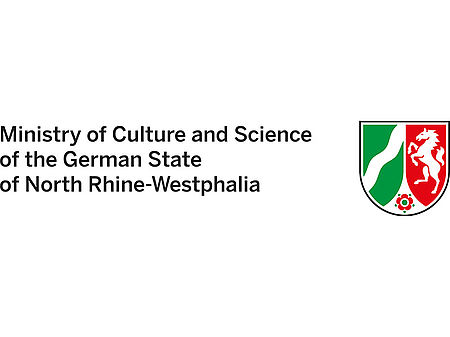DOI, ORCID and ROR: What makes persistent identifiers so useful?
Persistent identifiers play an important role in academic publishing by helping to make scholarly papers, authors and institutions permanently findable, retrievable and citable. As well as uniquely identifying each object, they also enable us to enrich the information on each individual paper, author and institution by establishing mutual links between them. Persistent identifiers and the metadata associated with them are generally machine-readable, which allows them to be used in a variety of applications.
The scientific community employs numerous persistent identifiers with a variety of different goals. The systems favoured in academic publishing are presented below.
Using DOIs to make research publications FAIR (findable, accessible, interoperable and reusable)
A digital object identifier (DOI) is a persistent identifier used to uniquely identify objects such as text documents and research data and make them permanently findable and citable. It can be assigned to various types of publications.
A DOI links to a publication’s landing page, which is a web page that provides descriptive (bibliographic) metadata such as the object’s title, author, date of publication and additional identifying information. The landing page also provides access to the file containing the research paper. Links to landing pages and their descriptive metadata are held in a central location. Information is entered in the store by the object’s provider, which could be a publisher, a journal, or a repository operator. As long as the provider keeps the metadata updated in the store at all times, the linked item will continue to be accessible even if its online location (URL) changes. In other words, the document’s location and metadata may change, but its DOI remains fixed, or ‘persistent’, so that anyone citing or referencing the document can be confident that it will remain permanently accessible.
As a general rule, authors cannot assign a DOI to their document themselves. The provider of the publication (e.g. the publisher) will have signed a contract with a registration agency which is responsible for assigning DOIs. Crossref and DataCite are the two best-known DOI registration services. Authors do not pay any charge for having a DOI assigned to their work.
DOIs can also be used for literature searches. Presented in the form of a link, a DOI will take the user directly to the publication’s landing page. In the unlikely event that a DOI fails to resolve to the identified entity, the registration agency can be contacted to request a correction.
A DOI can also be used to import a publication’s bibliographic metadata to reference management software programs.
In addition, DOIs provide the basis for a number of other services. For example, users can click the Crossmark “Check for updates” button to determine whether a more recent version of an item is available or whether an item has been retracted or corrected. DOIs are also used to calculate altmetrics, such as mentions on Twitter and other social media platforms, and they are similarly useful for measuring citation frequency: if a publication’s entry in a bibliography includes a DOI, this can be used to determine how often it has been cited.
The DOI system also allows different versions of a publication (e.g. the preprint and the version of record) to be merged, and it provides a versioning scheme for publications that are regularly updated.
Alternative systems of persistent document identifiers include Handle and Uniform Resource Name (URN) identifiers as well as database-specific identifiers such as PubMed ID (PMID). This latter option is generally used in parallel with DOI.
See also
Research data: what are the key issues to consider when publishing this kind of material?
Unique identifiers for authors: Open Researcher and Contributors ID (ORCID)
An ORCID ID is a persistent digital identifier that uniquely identifies an author throughout their career. By assigning a unique ID number to each researcher, the ORCID system makes it easy to distinguish between individuals, even if they have the same name. Name changes, alternative spellings and pseudonyms (“pen names”) are all tracked centrally in the ORCID profile metadata.
By including an ORCID ID in your publication, you can be sure that your work will be properly attributed to you; many journals, conferences and publishing platforms therefore ask authors to provide their ORCID ID whenever they submit a manuscript. The unique and unambiguous nature of an ORCID ID also makes it easier to search for an author’s publications, increases author visibility, and helps identify indexing errors in databases.
ORCID IDs are increasingly required in other areas such as research grant applications and job applications. In addition, the ORCID platform can be used to search for individuals and to find out more about their work and their key areas of research.
Researchers and authors from the scholarly community can apply for a free ORCID ID through the ORCID Inc. not-for-profit organisation. Ideally, each individual should only apply for an ID once and then use it for the remainder of their career, whether in research or any other sector. To make their profile more informative and useful, ORCID ID holders can add additional information and keywords to various categories including field of work, education, career, and externally-funded projects. They can also add their contact details and personal website as well as a list of their published works. Authors have sole control over their own profiles, so they can decide for themselves which information to include and what details to make publicly visible.
We recommend regularly updating the profile categories mentioned above to include all your latest details. You can import the metadata for your electronic publications from the DOIs or from a file exported from a reference management software program. To make sure your list of publications is as complete as possible, you should also enter older publications that are only available in print format; these must be entered in your ORCID profile manually.
Research institutions that are ORCID members have the option of automatically updating profiles by importing publications from sources such as the university bibliography or the institutional repository; entries must be checked and approved by the author(s) before being displayed in their profile. The advantage of this method is that publications only have to be entered once. To find out whether this service is available at your institution and how you can set up your profile to use it, please contact your institution’s library.
Multidisciplinary databases such as Web of Science and Scopus also assign unique “Author ID” identifiers. These can then be provided in addition to an ORCID ID depending on the context in each case. Profiles are created automatically, and requests for changes or corrections must be submitted to the database operator in each case.
See also
The role of an academic author: key tips for researchers
Unique identifier for institutions and organisations: ROR ID from the Research Organization Registry
Scientific communication also benefits from unique, persistent identifiers for research organisations. An institution ID makes it easier to unambiguously assign authors, publications and research data to a particular institution.
ROR metadata includes the research organisation’s official name together with any variations or alternate versions. It also includes any other identifiers available for the institution as well as the country location and type of organisation. ROR records provide useful disambiguation when assigning publications to a particular institution, making it easier to create and analyse the institution's research profile.
It is also helpful to include an institution ID in manuscript submissions. The publisher can use this ID to assign the author’s manuscript to the contract signed with that institution, thus ensuring that the agreed conditions are applied.
The ROR system is maintained through contributions from the scientific community, i.e. anyone can suggest adding new organisations and request corrections or additions to existing profiles. ROR reviews these suggestions and updates its database accordingly.
In addition to ROR, other identifiers for institutions include Ringgold IDs and database-specific solutions such as the Scopus Affiliation Identifier. However, ROR’s open, non-proprietary status has earned it widespread support in the scientific and library community.
A Funder ID is yet another type of persistent identifier. This is used to uniquely identify research funding bodies and to assign publications to the funding organisations that financed the projects on which the publications are based. The best known of these identifiers is probably the Crossref Funder ID, which is listed in the Funder Registry.
Find out more
To obtain more information on this topic, we recommend contacting your institution’s library. They will normally be able to tell you which persistent identifiers your institution uses and which IDs you should include to ensure your publications are correctly assigned to your institution. Some institutions also issue their own publishing guidelines or affiliation policy, which will also contain this information.
See also
Why researchers should check their institution’s affiliation policy before publishing their work
Disclaimer
Important note: The information and links provided here do not represent any form of binding legal advice. They are solely intended to provide an initial basis to help get you on the right track. ZB MED – Information Centre for Life Sciences has carefully checked the information included in the list of FAQs. However, we are unable to accept any liability whatsoever for any errors it may contain. Unless indicated otherwise, any statements concerning individual statutory norms or regulations refer to German law (FAQ updated 08/2022).
Contact

Dr. Jasmin Schmitz
Phone: +49 (0)221 999 892 665
Send mail
Related links
Crossref
DataCite
Crossmark
Handle.Net Registry
URN-Service Deutsche Nationalbibliothek
PubMed User Guide – PMID
ORCID
Web of Science ResearcherID
What is the Scopus Author Identifier?
ROR
Ringgold
Scopus LibGuide: Affiliation profile
Crossref Funder Registry
Further information
Lauscher, M. & Vandendorpe, J. (2024): Cheat Sheet Persistent Identifiers (accessed 07/03/2024)




